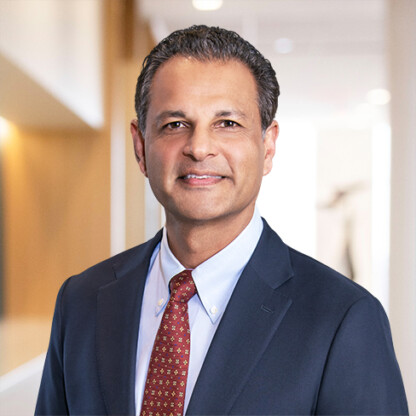Risto v. Screen Actors Guild: A Look at Article III Standing of Absent Class Members in the Ninth Circuit

Article III standing is a threshold jurisdictional requirement in all cases, including putative class actions. It is well settled that a named plaintiff must have constitutional standing throughout a case for subject matter jurisdiction to exist. The federal circuit courts, however, are split on whether unnamed class members must have standing at the class certification stage—or whether the standing requirement is satisfied so long as the class representative has standing. The Second, Eighth, and D.C. Circuits hold that a class action lawsuit cannot be certified under Federal Rule of Civil Procedure 23 if the class contains members who lack standing. See Denney v. Deutsche Bank, 443 F.3d 253, 263-64 (2d Cir. 2006); Halvorson v. Auto-Owners Ins. Co., 718 F.3d 773, 779 (8th Cir. 2013); In re Rail Freight Fuel Surcharge Antitrust Litig.-MDL. No. 1869, 725 F.3d 244, 252 (D.C. Cir. 2013). The First, Third, and Seventh Circuits take the latter approach, holding that absent class members are not required to show Article III standing at the class certification stage. See AB v. UFCW (In re Nexium Antitrust Litig.), 777 F.3d 9, 32 (1st. Circ. 2015); Neale v. Volvo Cars of N. Am., LLC, 794 F.3d 353, 363 (3d Cir. 2015); Kohen v. Pacific Inv. Mgmt Co., LLC, 571 F.3d 672, 676 (7th Cir. 2009).
Whether a class can be defined to include members who potentially lack standing has been a contested topic in the Ninth Circuit due to the court’s seemingly contradictory positions at different points in time. In Bates v. United Parcel Serv., Inc., 511 F.3d 974 (9th Cir. 2007), the Ninth Circuit held that the standing requirement is satisfied in the class action context “if at least one named plaintiff meets the requirements.” 511 F.3d at 985. The Ninth Circuit reaffirmed this approach in Stearns v. Ticketmaster Corp., 655 F.3d 1013 (9th Cir. 2011). More recent cases, however, reflect a different standard. In Mazza v. Am. Honda Motor Co., the Ninth Circuit stated: “no class may be certified that contains members lacking Article III standing.” 666 F.3d 581, 594 (9th Cir. 2012) (quoting Denney, 443 F.3d at 264).
Disarray in district court opinions ensued, and the Ninth Circuit then seemed to walk back its directive in Mazza: “the statement taken in context signifies only that it must be possible that class members have suffered injury, not that they did suffer injury, or that they must prove such injury at the certification phase.” Torres v. Mercer Canyons Inc., 835 F.3d 1125, 1137 n.6 (9th Cir. 2016). More recently, the court observed in dicta that “only the class representative must show standing at the class certification stage.” Ramirez v. TransUnion LLC, 951 F.3d 1008, 1033 n.14 (9th Cir. 2020).
Despite the Court of Appeals’ seemingly conflicting positions, district courts in the Ninth Circuit appear to be trending away from requiring standing for absent class members at the certification stage. Risto v. Screen Actors Guild-Am. Fed’n of Television & Radio Artists is instructive. No. 218CV07241CASPLAX, 2020 WL 5518600 (C.D. Cal. Sept. 14, 2020). In opposing plaintiff’s motion for class certification, the defendants in Risto argued that the district court could not certify the class as defined because certain proposed members lacked standing. Id. at *5 (citing Mazza). Without addressing Mazza, the district court in Risto found that the question of Article III standing of unnamed class members need not be addressed at class certification in the absence of any challenge to the class representative’s standing. Id. at *7. Based on its view that Ninth Circuit precedent is “clear,” the district court noted that for purposes of Article III, “only one Plaintiff needs to have standing for a class action to proceed.” Because the defendants did not challenge the named plaintiff’s standing, the court held certification was proper. Id. Nonetheless, the court continued, “to the extent that Article III standing is appropriately at issue on this motion for class certification, the requirements of Article III are satisfied here.” Id. (rejecting the defendants’ argument that unnamed class members were not financially impacted by fees at issue).
Among recent Ninth Circuit district court decisions, Risto takes a middle-of-the-road approach. Compare Moon v. Orange, No. SACV19258JVSKESX, 2020 WL 2332164, at *8 (C.D. Cal. Mar. 18, 2020) (striking class allegations and observing “no class may be certified if it includes members that lack standing”), with In re Coca-Cola Prod. Mktg. & Sales Practices Litig., No. 14-MD-02555-JSW, 2020 WL 759388, at *7 (N.D. Cal. Feb. 14, 2020) (granting certification and noting “standing is satisfied if at least one named plaintiff meets the standing requirements”). In light of the recent trend, to the extent available, litigants in the Ninth Circuit should be vigilant in raising arguments at the class certification stage regarding standing as to both the class representative and absent class members. Given the conflict within the Ninth Circuit and among other federal circuit courts, the issue is likely to develop further with the U.S. Supreme Court potentially weighing in to resolve the national circuit split.

